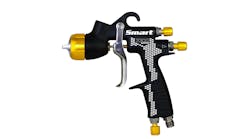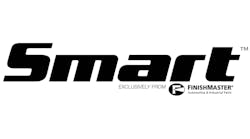Seam Sealers are a staple in any collision repair shop. With such a wide variety of applications, it can be difficult to know which product to choose to ensure you're performing a top-quality repair.
FenderBender sat down with three FinishMaster Technical Service Representatives, Sam Lopez, Joshua Daniels, and Ernest Molina, to learn everything you need to know about seam sealers.
“The biggest thing to look for in a seam sealer is the ability to replicate the OEM finish,” said Lopez. “A seam sealer is a very important part of the repair process, whether it's a structural repair or a cosmetic repair on the outside panel. If the seam has been broken, that needs to be repaired so you don't have water seeping into the vehicle and causing further damage down the road.”
Seam Sealer 101
Knowing what type of seam sealer to use for your repair is crucial to replicating the OEM finish. Seam sealers come in two primary forms: 1K, which does not require an activator and can be applied immediately, and 2K, which requires an activator, has a slower set time, and is able to hold tooling marks. In addition to these two forms, there are four different application types: heavy-bodied, self-leveling, sprayable, and 1k.
“Different seam sealers have a different viscosity,” said Lopez. “The FinishMaster Smart brand self-leveling seam sealer is good for drip rails or roof channels. There's the high build, which is similar to the self-leveling, but it's a thicker viscosity for more controlled flow where you don't need it to run so much into certain areas. The Smart heavy-bodied seam sealer has a better vertical hold. No matter what you need, there’s an option.”
When choosing a brand of seam sealers, you want to look for premium performance that stands out from the rest. The FinishMaster Smart brand offers you premium performance at an affordable price, providing time-saving applications to increase your productivity.
“One thing to look for is if it could go direct to metal or does it have to be primed,” said Daniels. “All of the Smart sealers can go direct to metal*. It’s better because you can just seam seal and then they're paintable without having to spend time priming in between coats.”
Training Your Team
Understanding how and when to use each type of seam sealer can feel intimidating. To help you and your technicians along the way, FinishMaster has training material available, both in-person and online.
“Preparation is key with seam sealing,” said Lopez. “You have to have the right cleanliness and the right type of surface for your seam sealer to work the way it's supposed to. Tech reps like myself go out and do hands-on training with shops. We sit down, get the guy's attention for a little bit, and go over some procedures on proper preparation application and different techniques to get the right textures and replicate pre-accident conditions. There is a lot of information for anybody that's willing to learn.”
For more information on seam sealers and proper application, visit the FinishMaster YouTube channel.
*Never apply seam sealers, including varieties with bare metal capabilities, over bare metal (i.e., roof rails, trunk floors, truck bed floors) that may puddle or pool anywhere with water. Apply a corrosion-resistant primer, such as epoxy, first and then seal with seam sealer to prevent corrosion.



